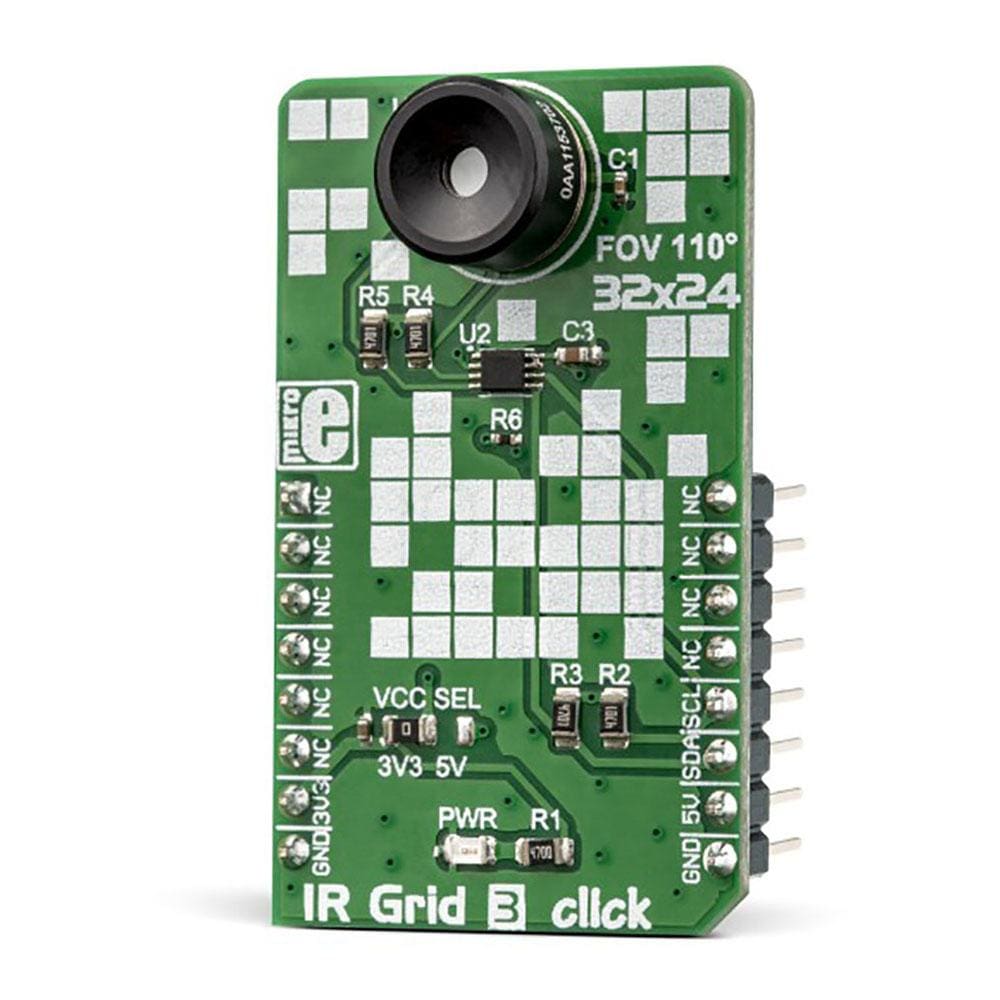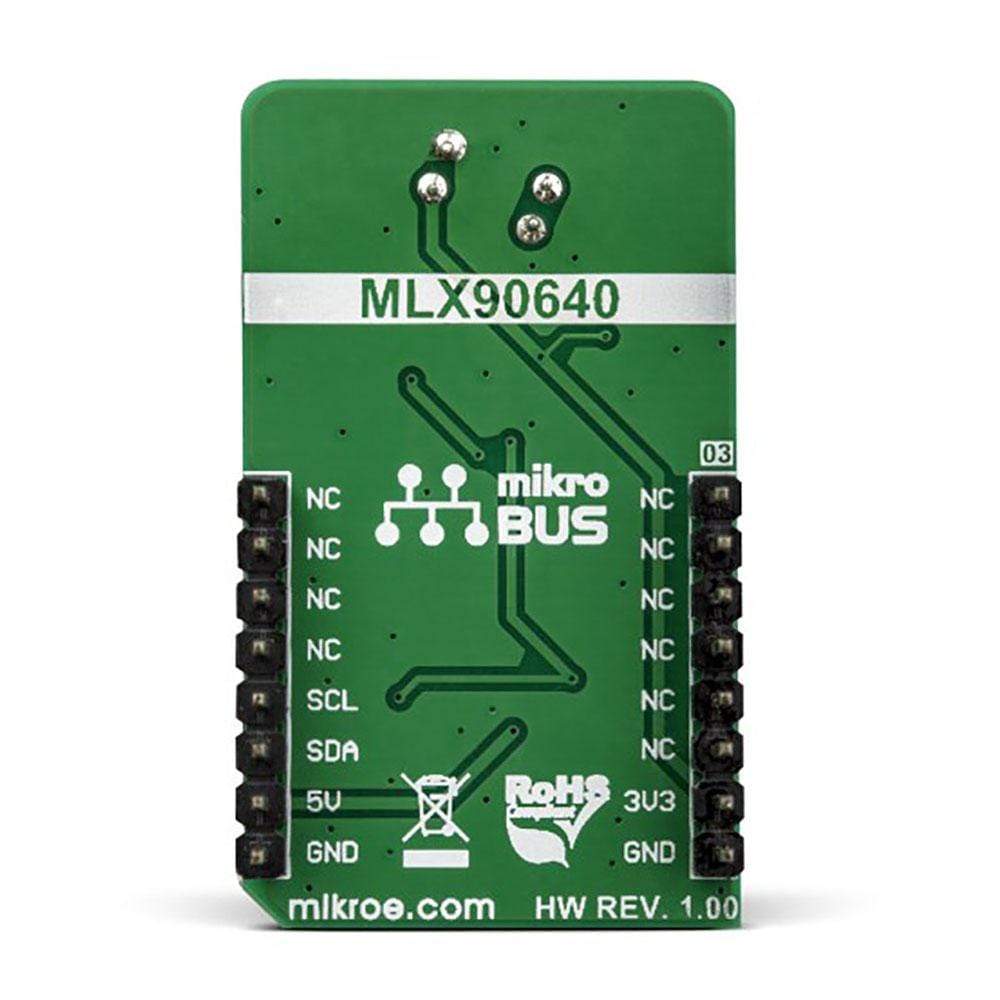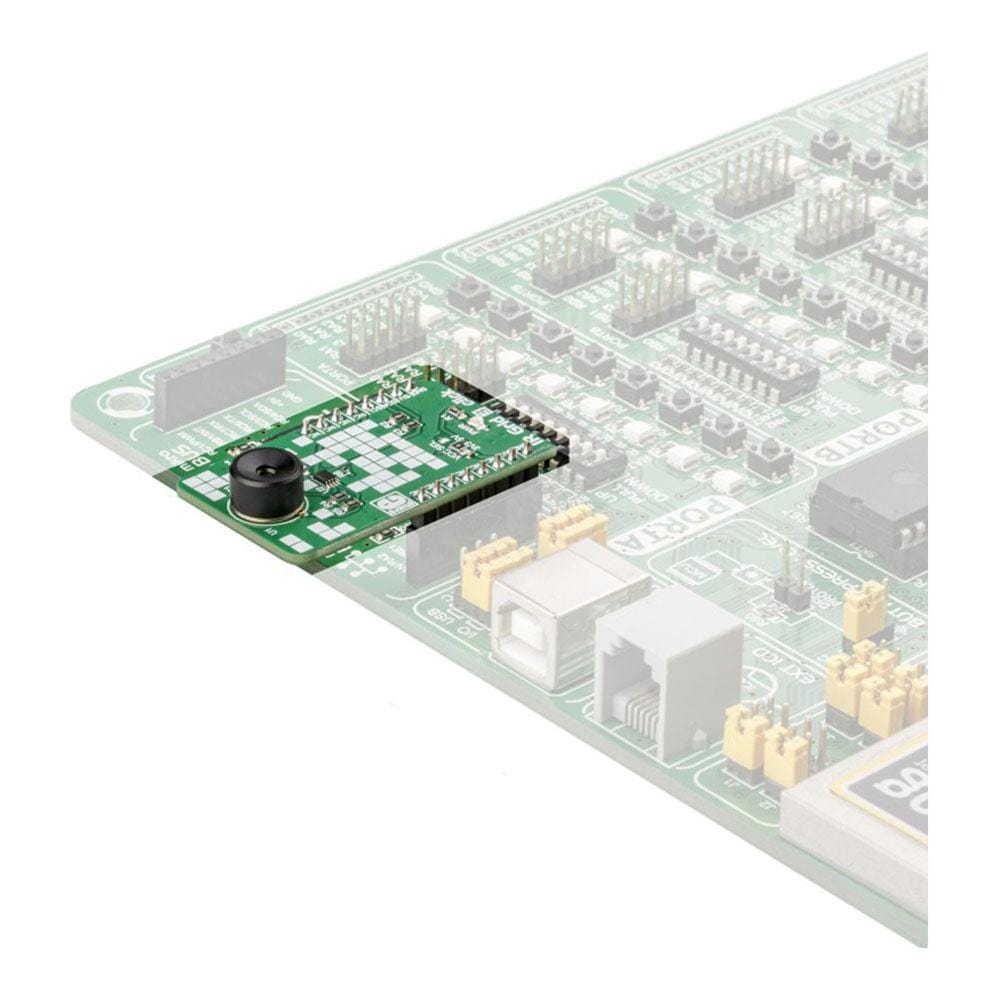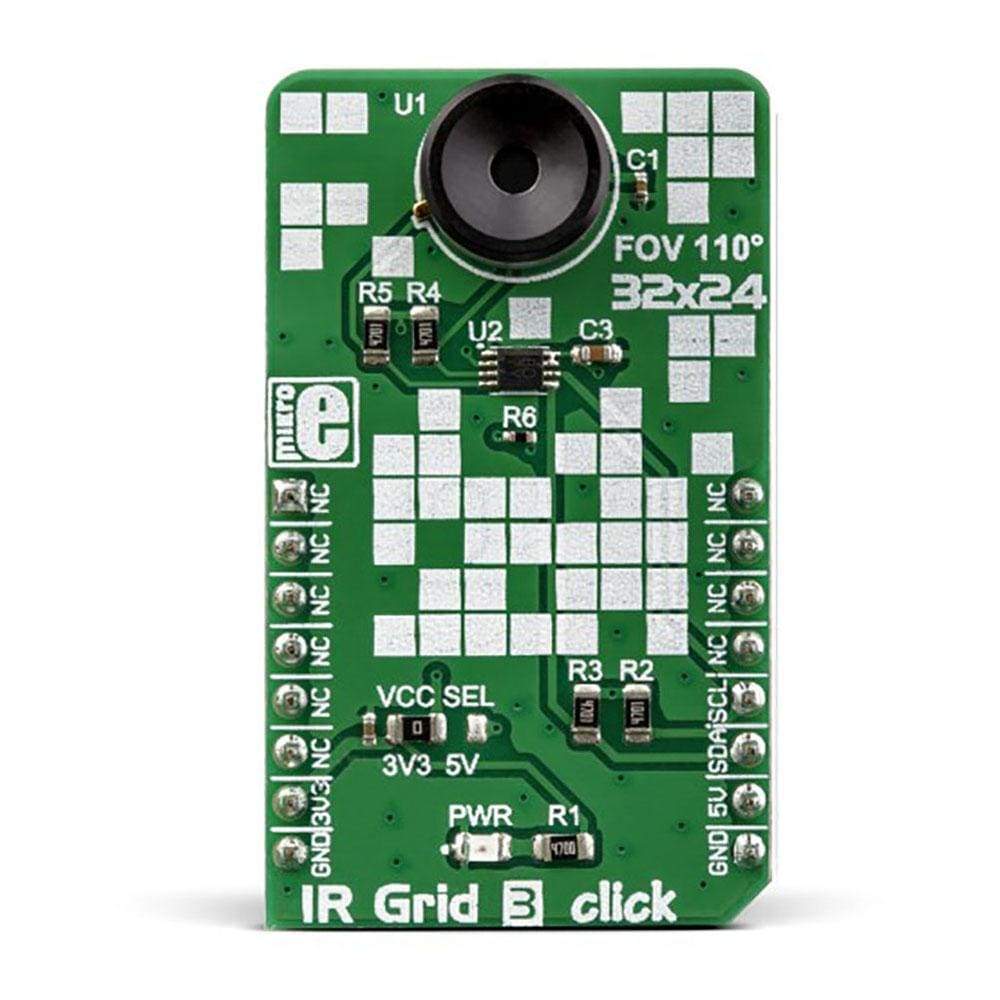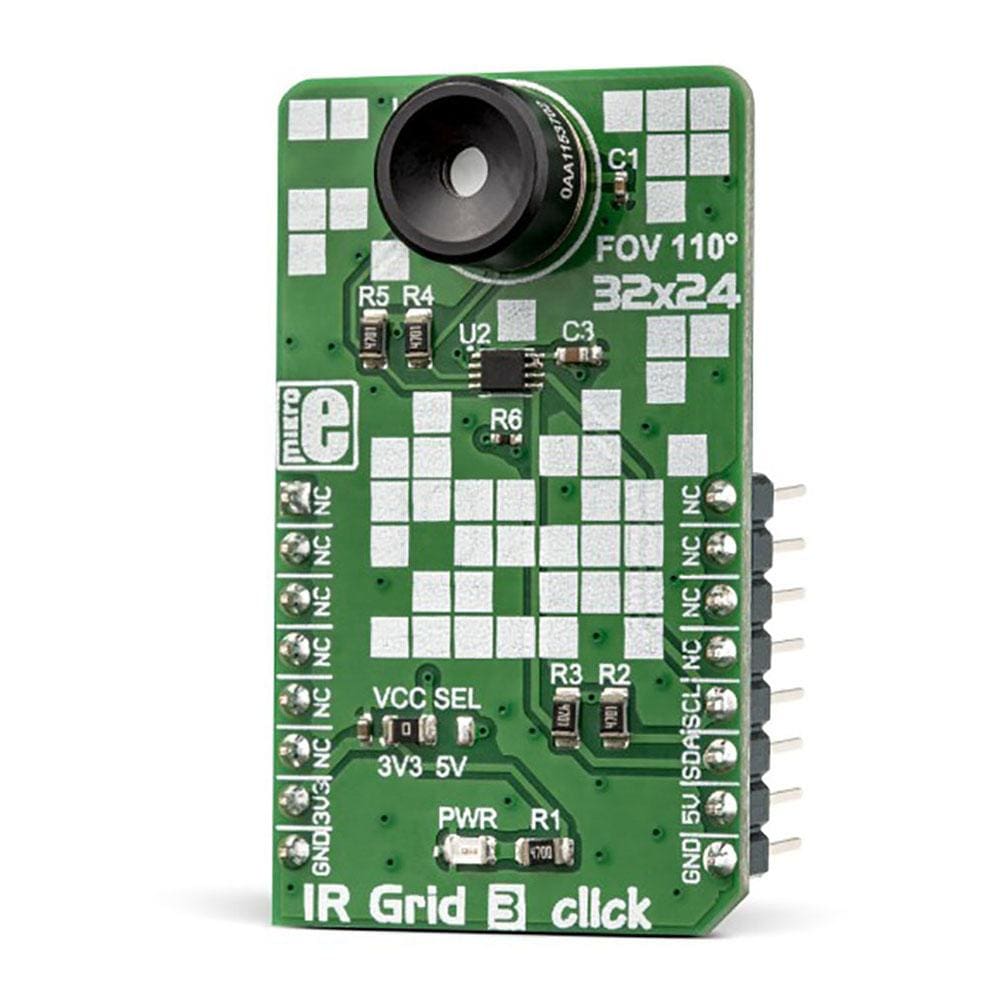
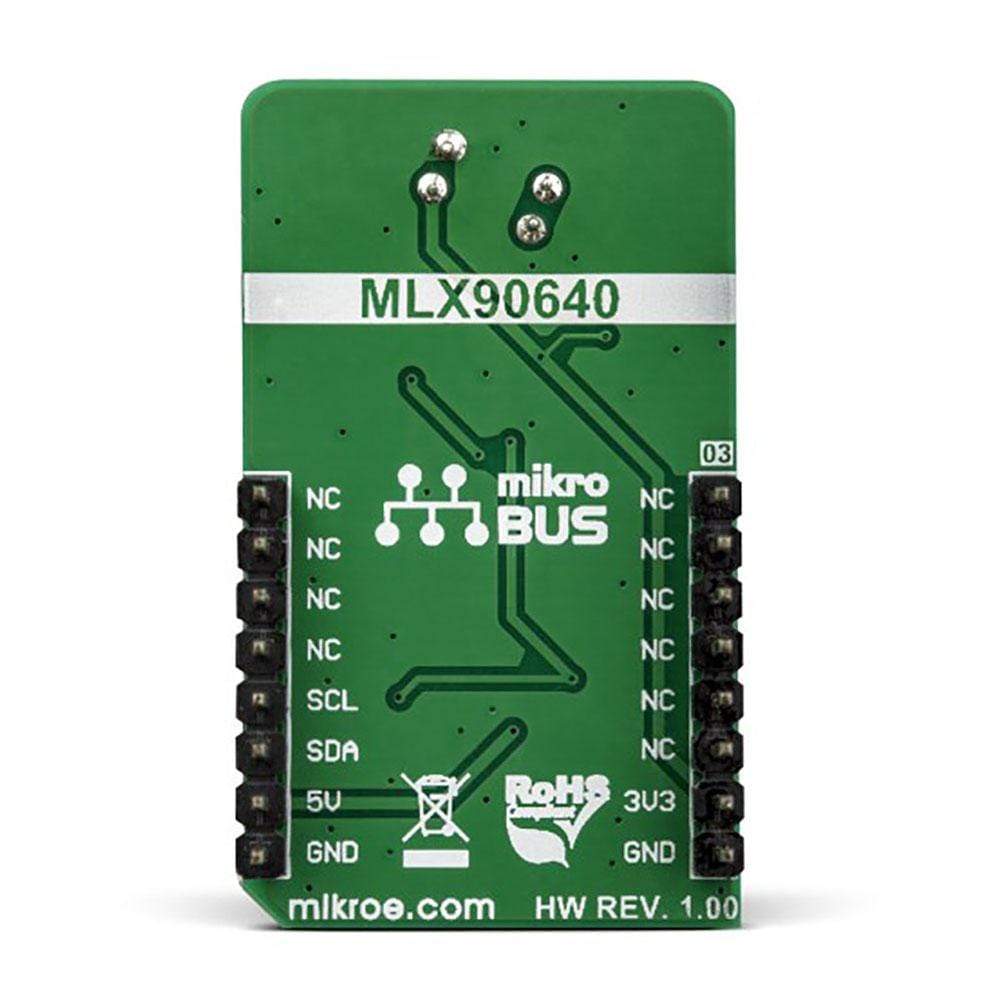
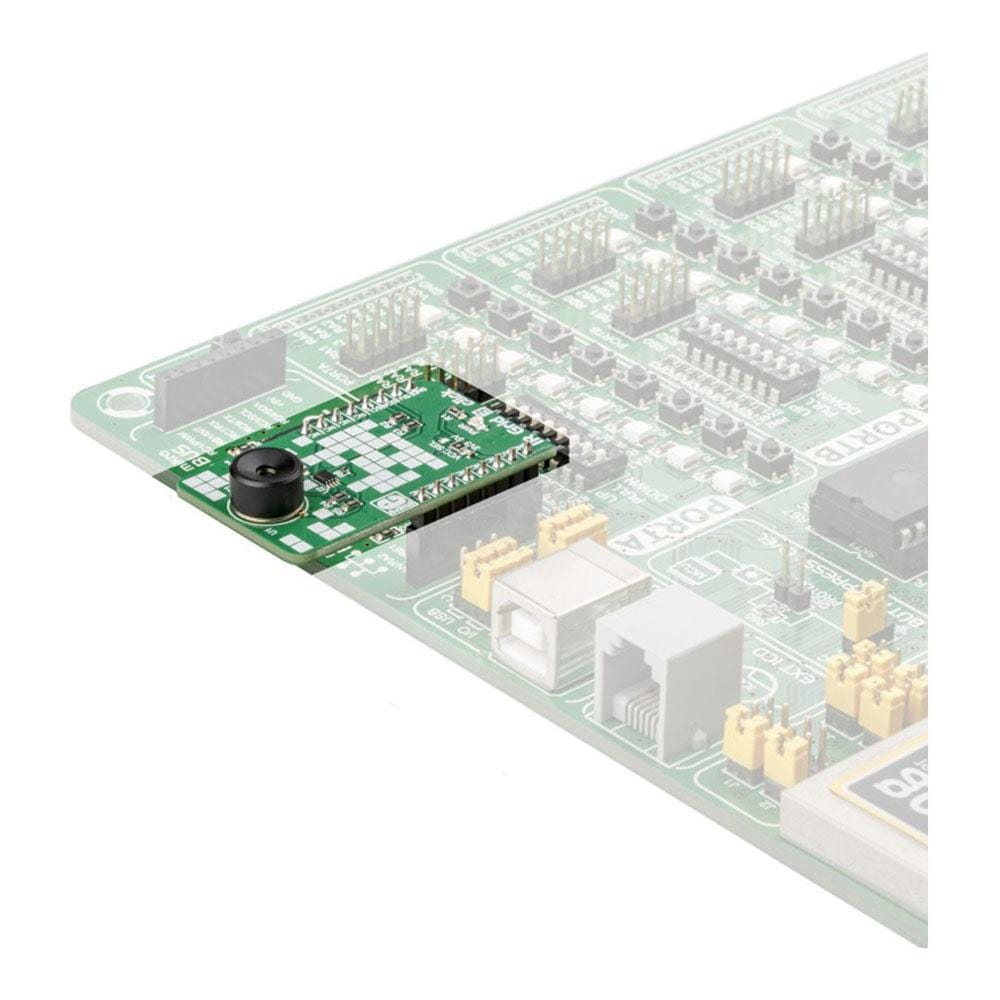
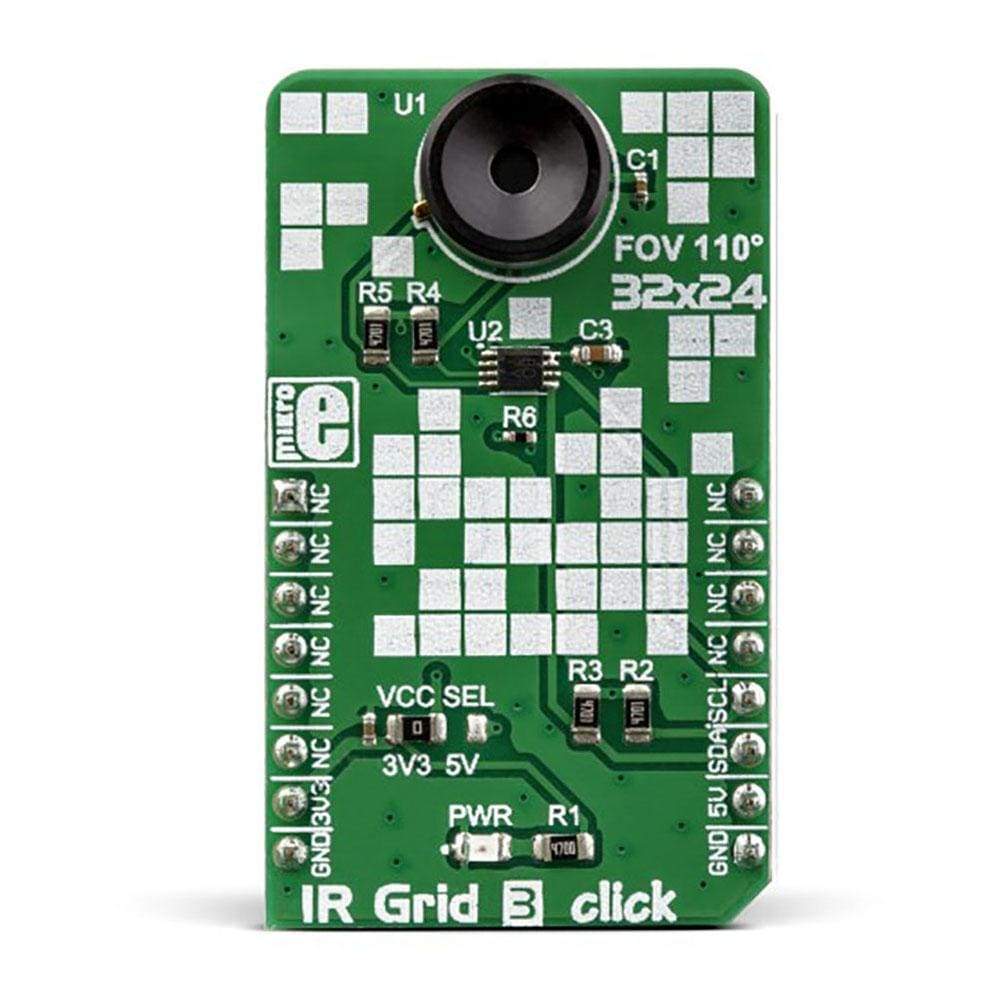
Overview
The IR Grid 3 Click Board™ is a thermal imaging sensor. It has an array of 768 very sensitive, factory calibrated IR elements (pixels), arranged in 32 rows of 24 pixels, each measuring an object temperature up to 300&Deg; C within its local Field of View (FOV). The Melexis MLX90640-BAA IR sensor used on this Click Board™ has only four pins, and it is mounted inside of the industry-standard TO39 package. The Click Board™ comes as a fully tested and approved prototype, making it a reliable device ready to use on the development board. The full package also includes the mikroSDK software and a library with all the functions.
The IR Grid 3 Click Board™ is suitable for a wide range of applications, including thermal scanners, precise contactless thermal measurement, thermal leaks in homes, industrial temperature control of moving parts, other types of heated object localization, human presence, and similar applications that require accurate contactless thermal measurement, or thermal imaging.
Downloads
Das IR Grid 3 Click Board™ ist ein Wärmebildsensor. Es verfügt über ein Array von 768 sehr empfindlichen, werkseitig kalibrierten IR-Elementen (Pixeln), die in 32 Reihen mit 24 Pixeln angeordnet sind und jeweils eine Objekttemperatur von bis zu 300 °C innerhalb seines lokalen Sichtfelds (FOV) messen. Der auf diesem Click Board™ verwendete IR-Sensor Melexis MLX90640-BAA hat nur vier Pins und ist im Industriestandard-TO39-Gehäuse montiert. Das Click Board™ wird als vollständig getesteter und zugelassener Prototyp geliefert und ist somit ein zuverlässiges Gerät, das sofort auf der Entwicklungsplatine verwendet werden kann. Das Gesamtpaket umfasst auch die MikroSDK-Software und eine Bibliothek mit allen Funktionen.
Das IR Grid 3 Click Board™ eignet sich für eine breite Palette von Anwendungen, darunter Wärmescanner, präzise berührungslose Wärmemessung, Wärmelecks in Haushalten, industrielle Temperaturregelung von beweglichen Teilen, andere Arten der Lokalisierung erhitzter Objekte, menschliche Anwesenheit und ähnliche Anwendungen, die eine genaue berührungslose Wärmemessung oder Wärmebildgebung erfordern.
| General Information | |
|---|---|
Part Number (SKU) |
MIKROE-3217
|
Manufacturer |
|
| Physical and Mechanical | |
Weight |
0.019 kg
|
| Other | |
Country of Origin |
|
HS Code Customs Tariff code
|
|
EAN |
8606018713738
|
Warranty |
|
Frequently Asked Questions
Have a Question?
Be the first to ask a question about this.

